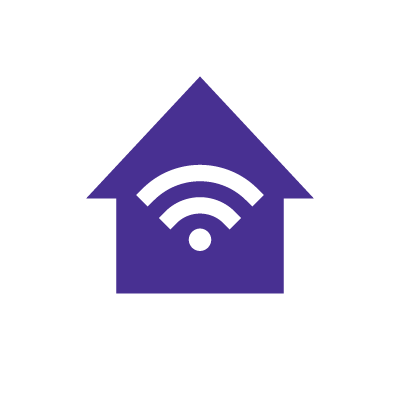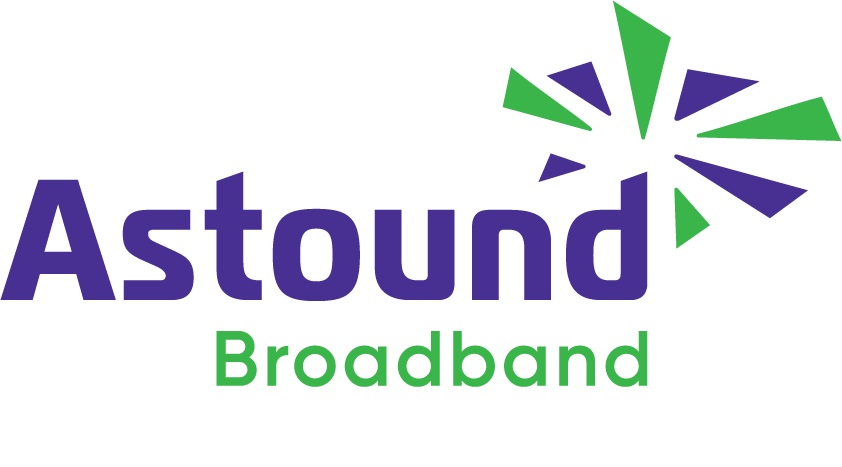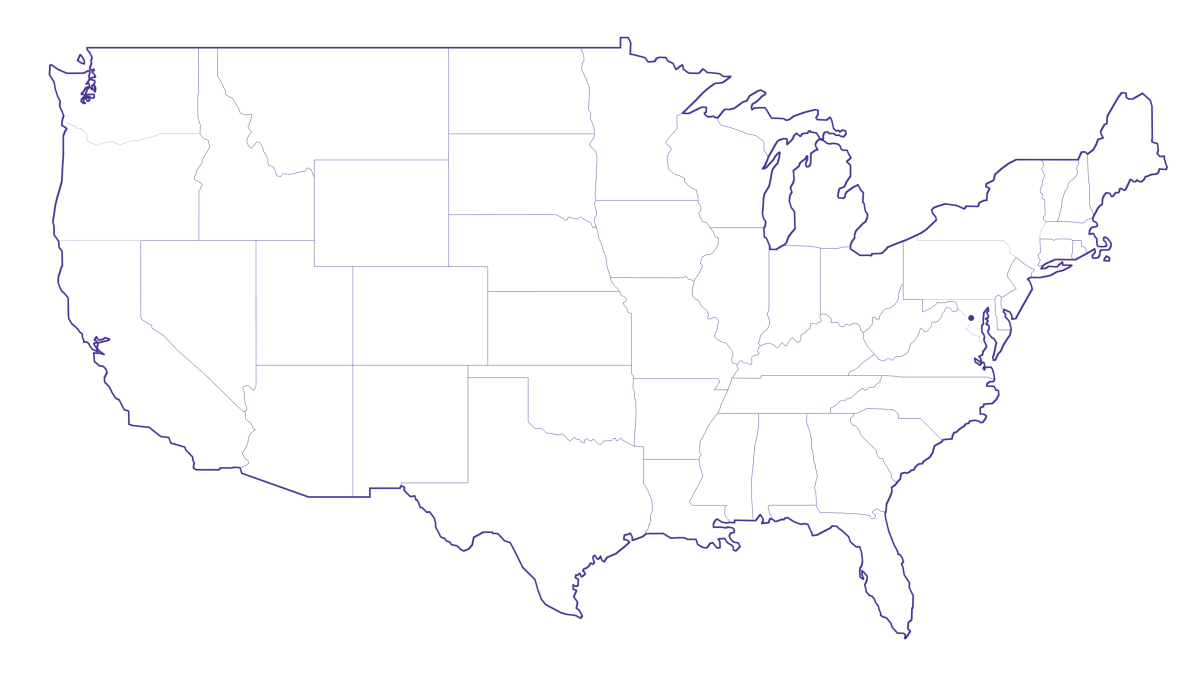Too many devices? Here’s what eero can support

In every home, the number of internet-connected devices is growing rapidly, with each device competing for a stable internet connection. Managing these connections is challenging, but that’s where eero comes in. After connecting the eero gateway to your modem, the eero WiFi system handles the demands of multiple devices by ensuring consistent connection to every device in a home.
But how many devices does eero support? This article will explore how many devices eero supports, what counts as a device and how to maintain consistent connectivity in your home. Whether you have 10 or 50 devices connected, the eero WiFi system provides a solution to ensure consistent, uninterrupted performance.
WiFi that just works!
WiFi plans for any home
Tiny, large or somewhere in between; find WiFi coverage to fit any space. Blanket your entire home with a fast and ultra‑reliable connection.

How many devices can one eero support?
On average, a single eero node can support up to 128 devices connected simultaneously.
However, the specific eero model you are using influences the device capacity. The advanced tri-band models like eero Max 7 or eero Pro 6e can handle more devices and heavy network usage than the older eero models.
The capacity also highly depends on the activities those devices undertake. Engaging in bandwidth-intensive applications like 4K video streaming, online gaming and transferring large files can reduce the number of devices supported to around 20 to 30 per unit.
Interference by other household electronic devices, physical obstructions and placement of the eero router can also affect device capacity. Optimizing these factors ensures that your router maintains reliable connectivity to as many devices as possible.
Let’s see what exactly qualifies as a device on a network.
What counts as a device?
A device is anything that is connected to the internet via WiFi or a wired connection using an ethernet port. These devices can include laptops, smartphones, game consoles, smart TVs and IoT devices such as smart doorbells, light bulbs and kitchen appliances.
However, not all devices consume bandwidth equally. For example, devices that stream 4K content or host online gaming sessions take up more bandwidth than checking emails or scrolling through social media. Overloading your network with too many high-usage devices without an adequate eero setup will impact the connection’s performance.
Device limitations based on eero models
Understanding the technical specifications of each eero model is critical when deciding which eero system is best for your home.
- eero Max 7: The eero Max 7 is a high-performance mesh WiFi system with advanced capabilities like WiFi 7 support and tri-band connectivity. It can support over 200 devices simultaneously, making it suitable for large-scale environments. However, its device capacity may be overkill for households with fewer devices and its high cost reflects its emphasis on heavy internet usage.
- eero Pro 6 and eero 6e: The eero Pro 6 and eero 6e (eero Pro 6e) can handle multiple devices. The eero Pro 6 can handle over 75 devices simultaneously, providing 2000 square feet of coverage per unit. Comparatively, the eero 6e supports WiFi 6e, which includes access to the 6 GHz band that allows the eero 6e routers to support additional devices, handling over 100 connected devices simultaneously.
- eero 6+: The eero 6+ model provides a dual-band WiFi 6 connection that supports 75+ connected devices, up to Gigabit speeds and 1500 sq. ft. of coverage per node.
- eero 6: The eero 6 model supports 75+ connected devices, provides up to 500 Mbps internet speeds and covers up to 1500 sq. ft per node.
- eero: The eero model provides dual-band WiFi 5 connectivity and can handle 50+ connected devices. Each node covers 1500 sq. ft.
- eero beacon: The eero beacon is a smaller unit that pairs with the eero router to wirelessly extend the network’s coverage.

Mesh WiFi with
eero Secure
Enhanced Whole Home WiFi uses multiple routers (or eeros®) to boost range, speed, and stability, while eero Secure, included at no extra cost, offers parental controls, ad blocking, and internet backup for constant connectivity.
WiFi standards and device capacity
The device capacity of an eero depends on the model and the WiFi standards they support. Each WiFi generation provides varying capabilities for handling device capacity, internet speeds and performance.
- WiFi 5 (802.11ac): Operates on the 5 GHz band and introduces the Multi-User Multiple Input/Multiple Output (MU-MIMO) technology for simultaneous device connections. Older models of eero support WiFi 5, which is reliable for moderate device loads, but unsuitable for bandwidth-intensive applications’ increasing demands.
- WiFi 6 (802.11ax): Operates on dual-band frequencies (2.4 GHz and 5 GHz), providing enhanced MU-MIMO and OFDMA technologies for simultaneous connections. More advanced eero models like the eero 6, eero 6+ and eero Pro 6 gateways support WiFi 6, which can handle more devices, have higher speeds and improve efficiency.
- WiFi 6e: The eero 6e router supports WiFi 6e, adding access to the 6 GHz band, significantly increasing bandwidth and support for more devices. It’s ideal for more bandwidth-intensive activities like 4K streaming and online gaming.
- WiFi 7 (802.11be): The eero Max 7 supports the latest WiFi standard, WiFi 7. WiFi 7 offers potential speeds of up to 46 Gbps, minimal latency and a higher device capacity, making it ideal for households with multiple devices handling intensive internet usage.
Will adding too many devices to one eero slow down my internet speed?
Yes, connecting too many devices to a single eero router can impact your eero’s WiFi performance in several ways, including:
- Bandwidth congestion: Connected devices split the available bandwidth among themselves. When many devices consume various bandwidth capacities, the bandwidth becomes congested, leading to slower speeds and lag.
- Increased latency: An overloaded eero device can delay data transmission, causing higher latency. Higher latency results in slower response times for online activities, such as video conferencing and online gaming sessions, significantly affecting the overall user experience.
- Signal interference: Multiple devices operating on the same frequency band can create signal interference, which dilutes the signal quality and affects the connection’s stability.
- Overloaded eero device: Each eero router and beacon has a maximum number of devices it can efficiently handle. Exceeding this limit overloads the device, reducing speeds and possibly losing connectivity.
- Limited device prioritization: Even when you prioritize bandwidth for specific devices like work laptops or gaming devices in your eero device settings, they may still experience slowdowns when too many devices are connected. The additional devices consume the allocated bandwidth, reducing the effectiveness of prioritization.
Consider adding more eero nodes or beacons to your internet connection to distribute the load evenly across your home. You can prioritize essential devices in the eero settings and disconnect idle devices to free up bandwidth.
Build your plan
Your perfect plan is just a click away
Get the speeds, WiFi, mobile and TV plans you need all at an affordable price. Bundle your services with Astound and see how much you can save.

Frequently asked questions
How many eeros do I need?
The number of eero devices needed depends on the number of devices you have, the size of your home, its layout and the materials used in its construction. For a small house or apartment, one or two eeros may be enough, while larger homes with two or more floors can benefit from two or three eero devices.
How far away can devices be from an eero node?
For optimal performance, devices should be within 50 feet of an eero gateway and eero beacons should be no more than 50 feet apart. However, factors such as your home’s layout and size, as well as its construction materials, can all affect performance. Position the nodes centrally in open spaces away from obstacles like cabinets, shelves, walls or other electronic devices that can cause signal interference.
*Internet speeds may vary & are not guaranteed. Certain equipment may be required to reach advertised speeds. DOCSIS 3.1 modem with 2.5GE physical LAN port is required for 1 Gigabit speeds and higher. See astound.com/yourspeed for why speeds may vary. To view Astound’s FCC Network Management Disclosure see astound.com/policies-disclaimers. Limited time offer, subject to change without notice. Advertised promotional price valid for duration of the stated promotional period from time of service activation. Regular rates apply after promotional period ends. Equipment not included and is extra. Modem required for Internet service. Enhanced Wi-Fi or Whole Home Wi-Fi (eero) not included and is add’l. Offer includes a monthly discount for enrollment in both automatic payments (autopay) & paperless billing (e-bill). Discount of $10 applies with automated bank account deduction or a discount of $5 applies with automated credit/debit card payment. Valid email address required. Must complete enrollment in autopay and e-bill within 30-days of placing the order. Without enrollment, the discount does not apply. Discount appears on bill within 3 bill cycles after enrolling. If either autopay or e-bill is canceled, services are changed, or the account is not in good standing, then the monthly discount will be discontinued. Offer valid only for new residential Astound customers or previous customers with an account in good standing who have not had Astound service within the last 60 days. Any add’l services, equipment, premium channels & other tiers of service are subject to an add’l charge & regular increases. A one-time activation fee of $14.99 (in addition to any installation fees) will be charged & is subject to change. Add’l fees apply for taxes & surcharges, and are subject to change. WA RESIDENTS: unless otherwise specified, price does not include a 2% Regulatory Administration Fee. For details about taxes, fees & surcharges visit astound.com/fees. No early termination fees apply in the event service is terminated in advance of the promotional end date. Customer is responsible for any accrued service charges in the event service is canceled. Subject to credit check. Not all services & speeds are available in all areas. A multi-product discount may be available to qualifying addresses with a subscription to mobile, TV, and 600 Mbps Internet or higher. Discounts will be reflected in your order cart at time of purchase, if available. Other restrictions may apply. All services are governed by the Astound Customer Terms & Conditions that can be found at astound.com/policies-disclaimers. © 2025 Radiate HoldCo, LLC d/b/a Astound Broadband. All rights reserved.
While we have made every attempt to ensure that the information contained in this site has been obtained from reliable sources, Astound is not responsible for any errors or omissions, or for the results obtained from the use of this information. All information in this site is provided “as is”, with no guarantee of completeness, accuracy, timeliness and without warranty of any kind, express or implied, including, but not limited to warranties of performance, merchantability and fitness for a particular purpose. Certain links in this site connect to other websites maintained by third parties over whom Astound has no control. Astound makes no representations as to the accuracy or any other aspect of information contained in other websites.
eero Plus is available for an additional $9.99/month and requires subscription to whole home WiFi powered by eero.

















